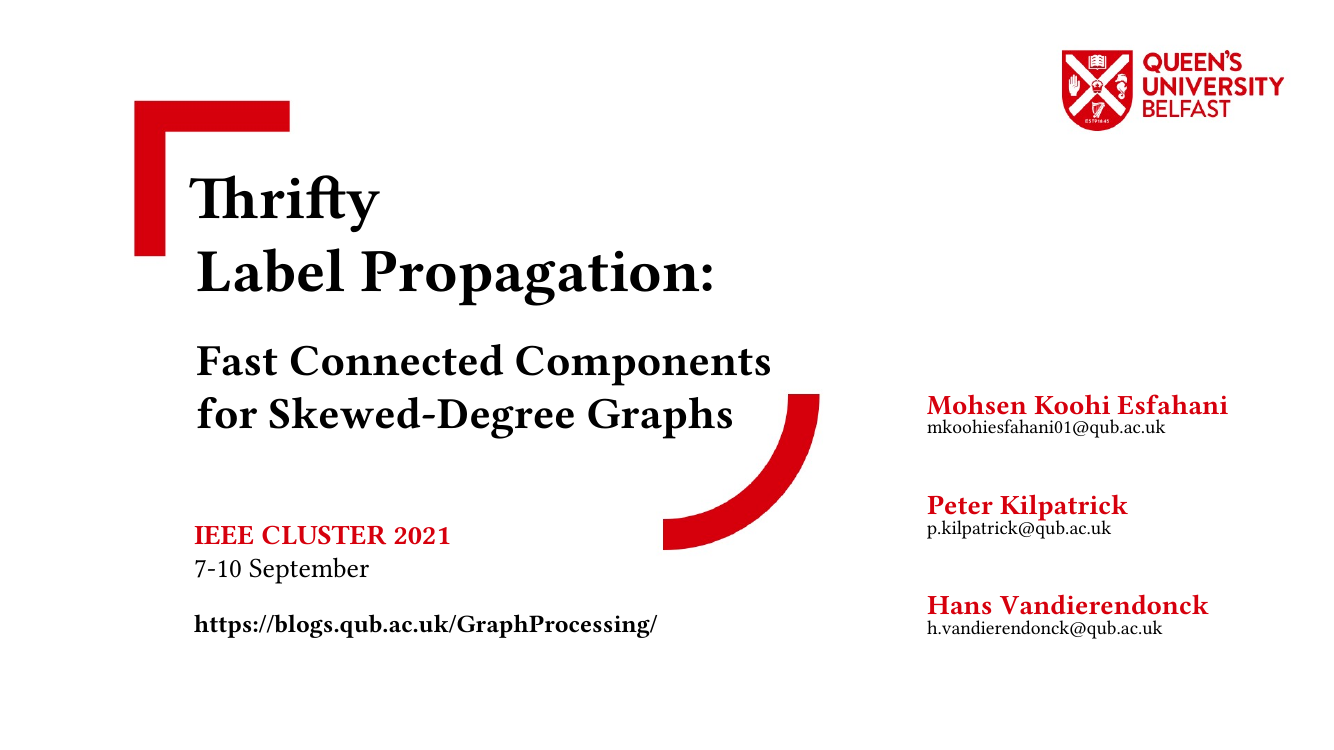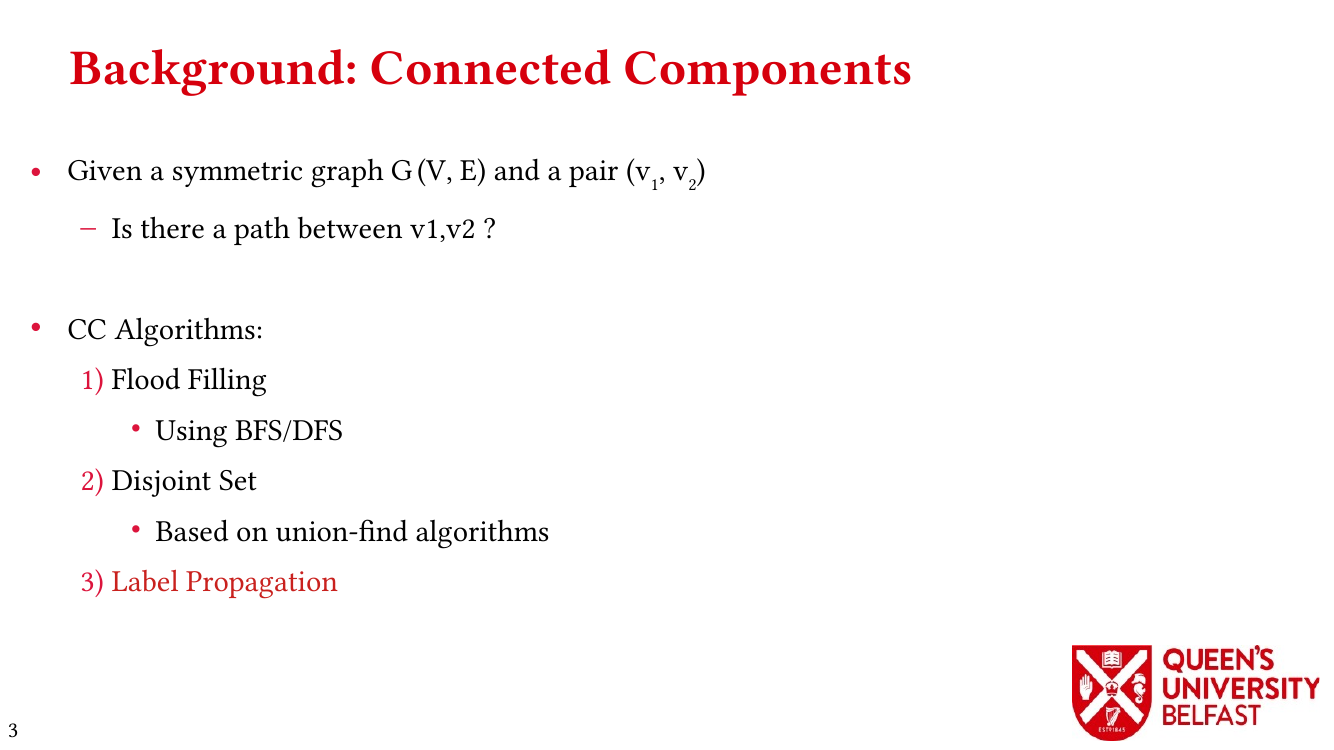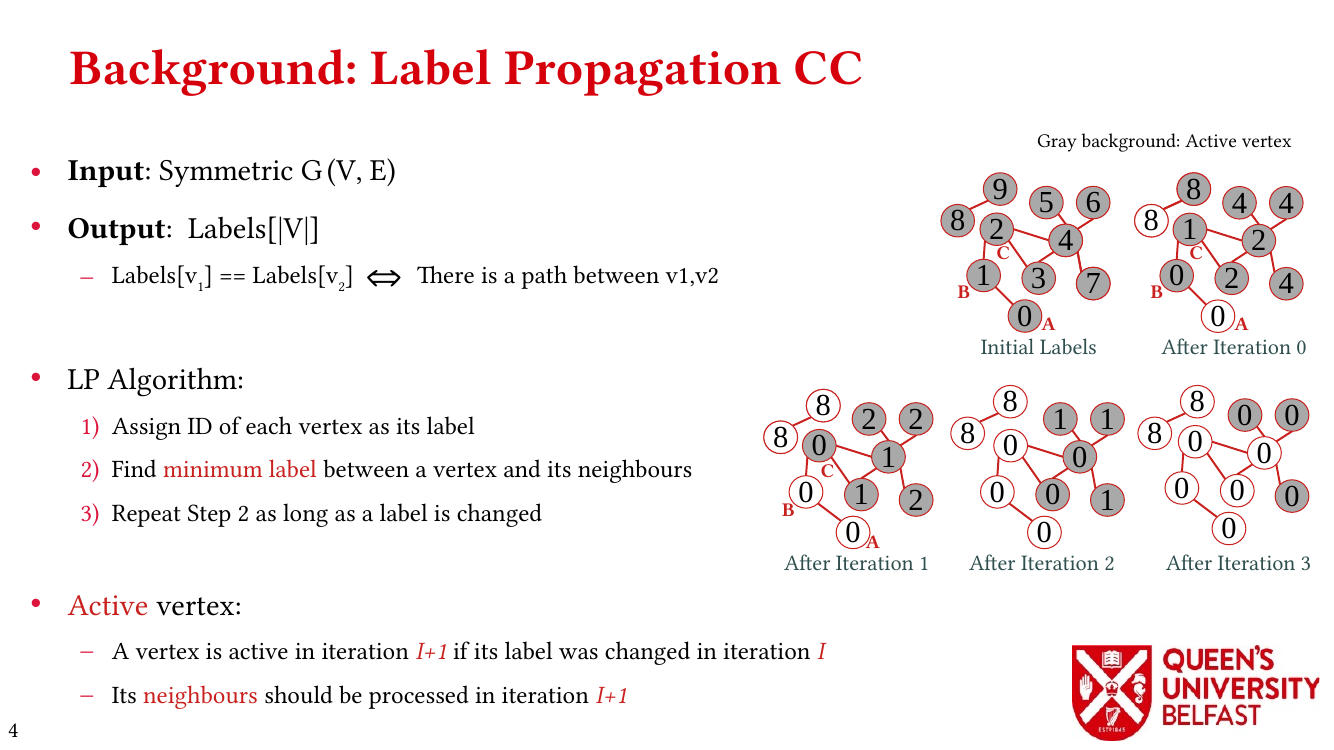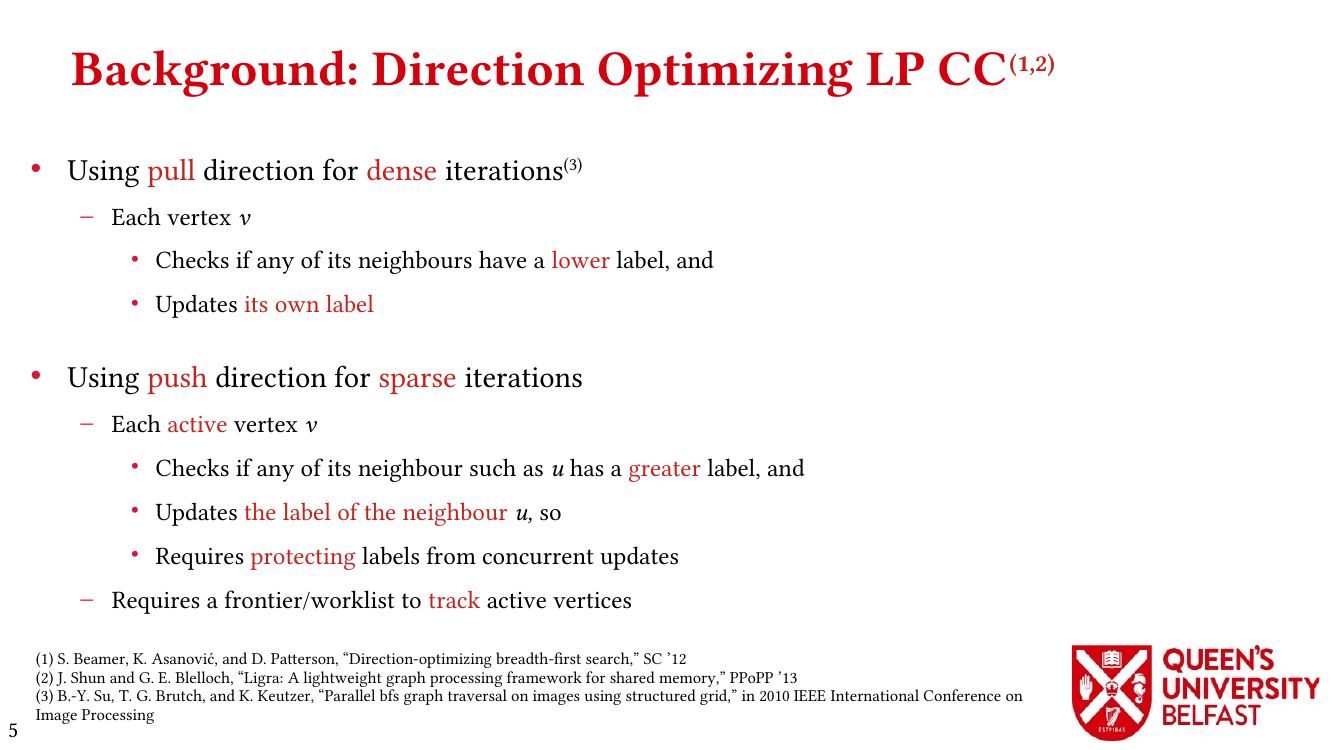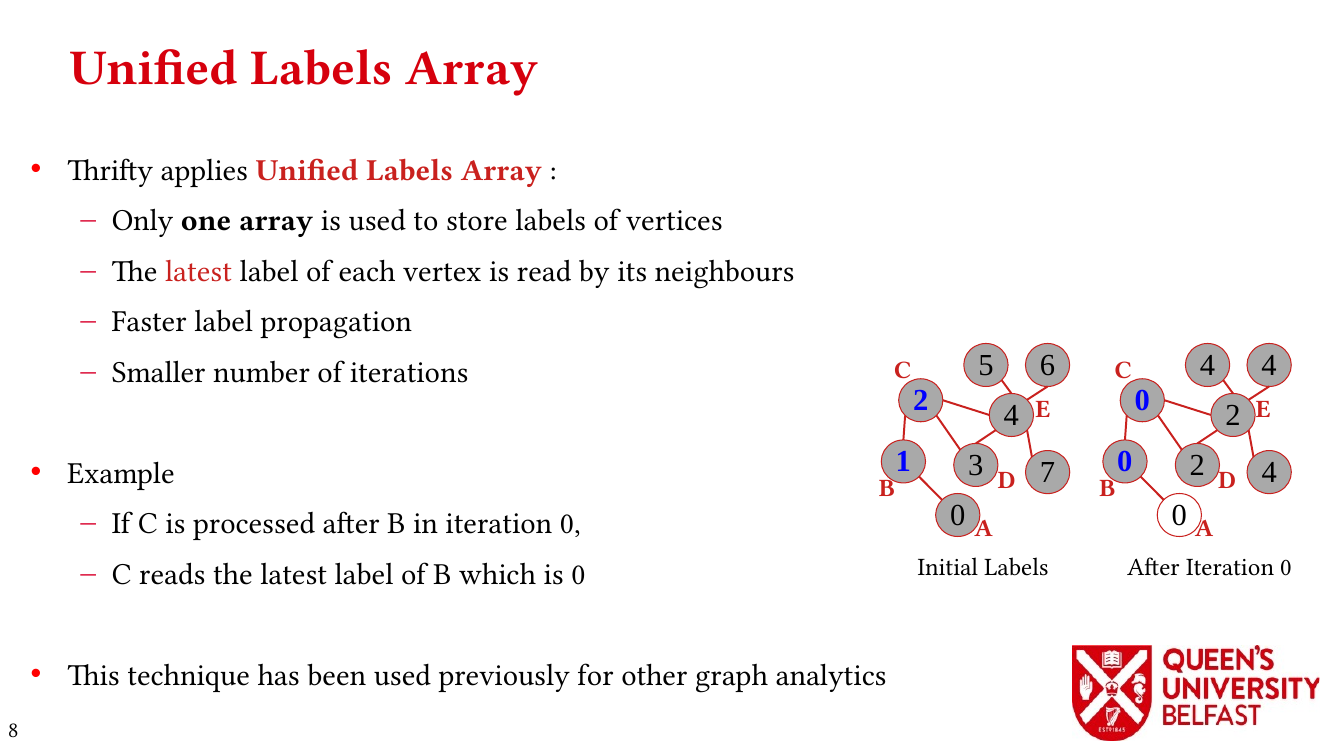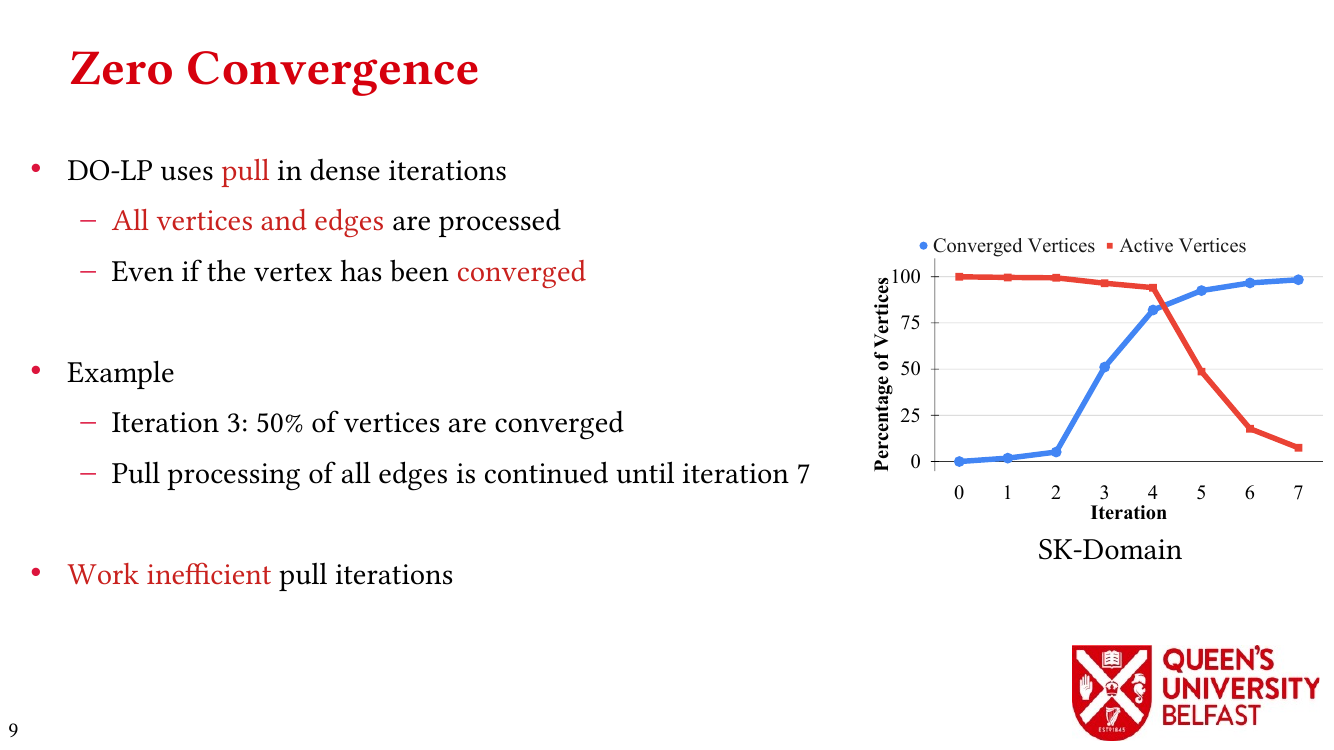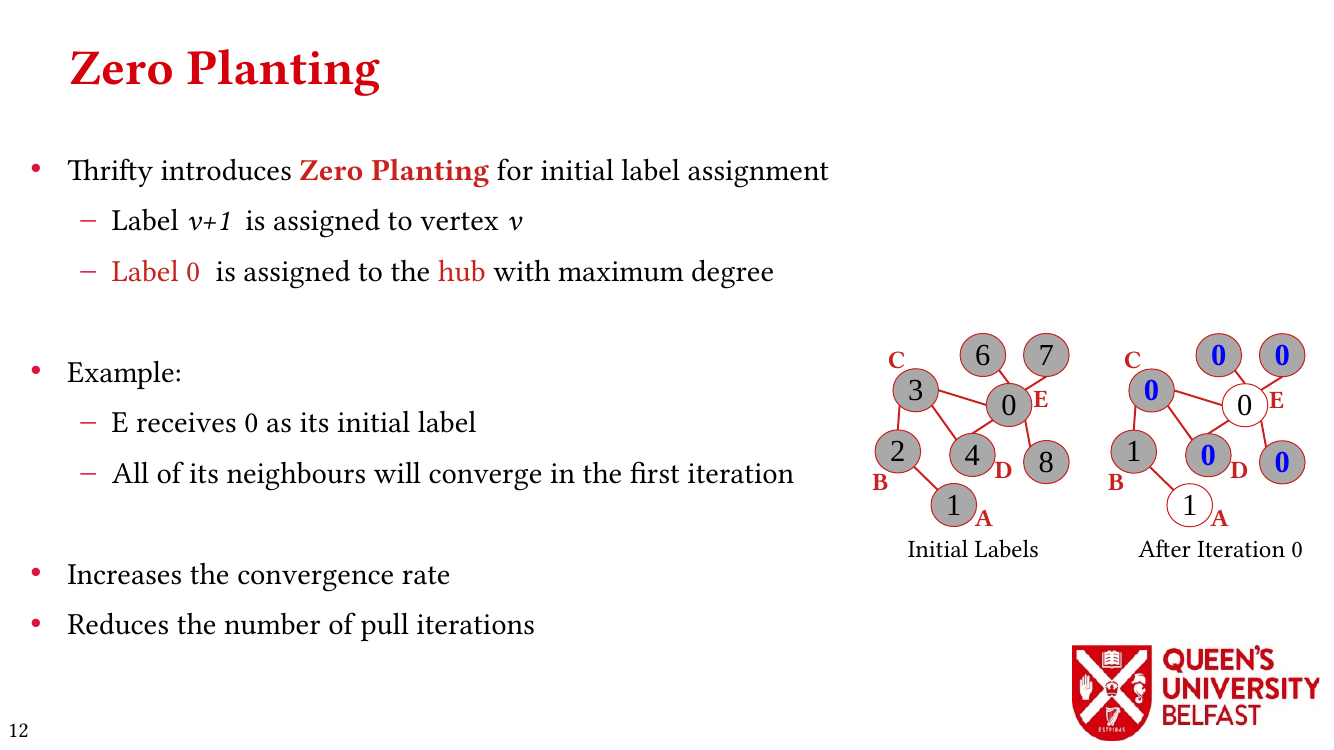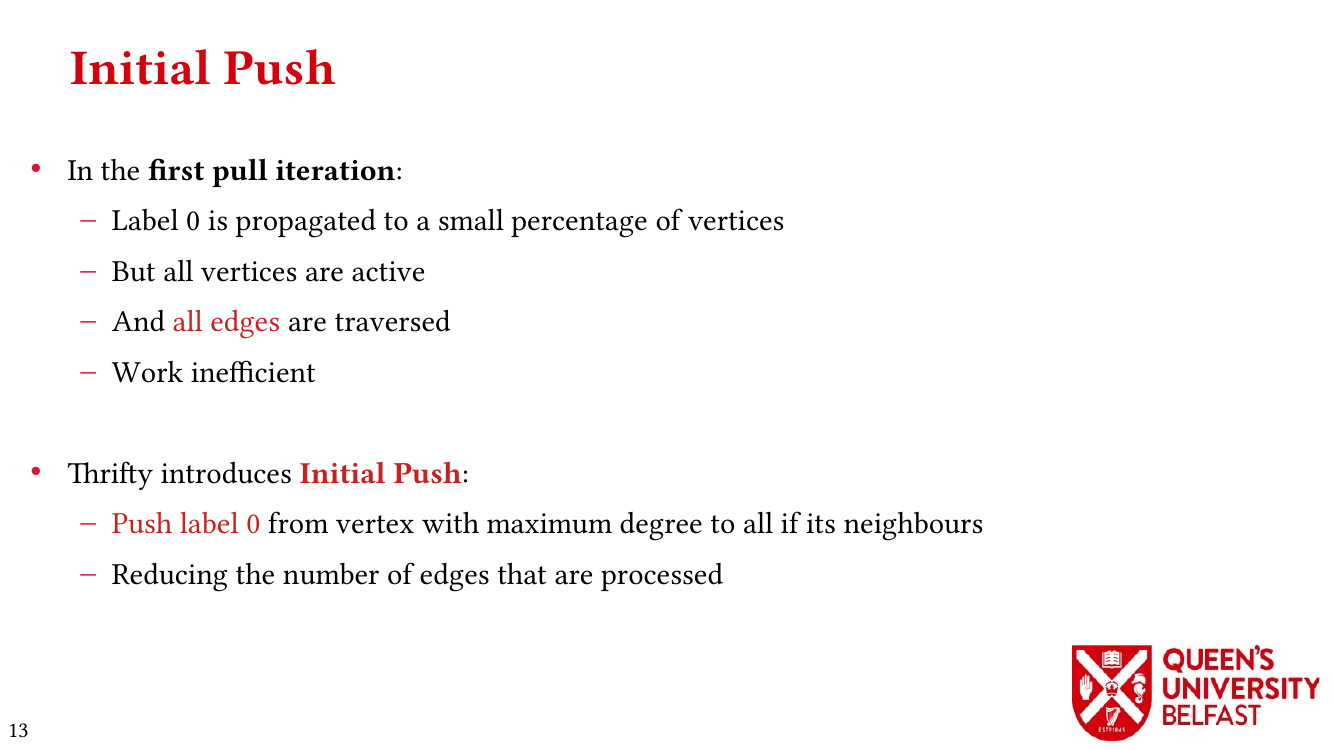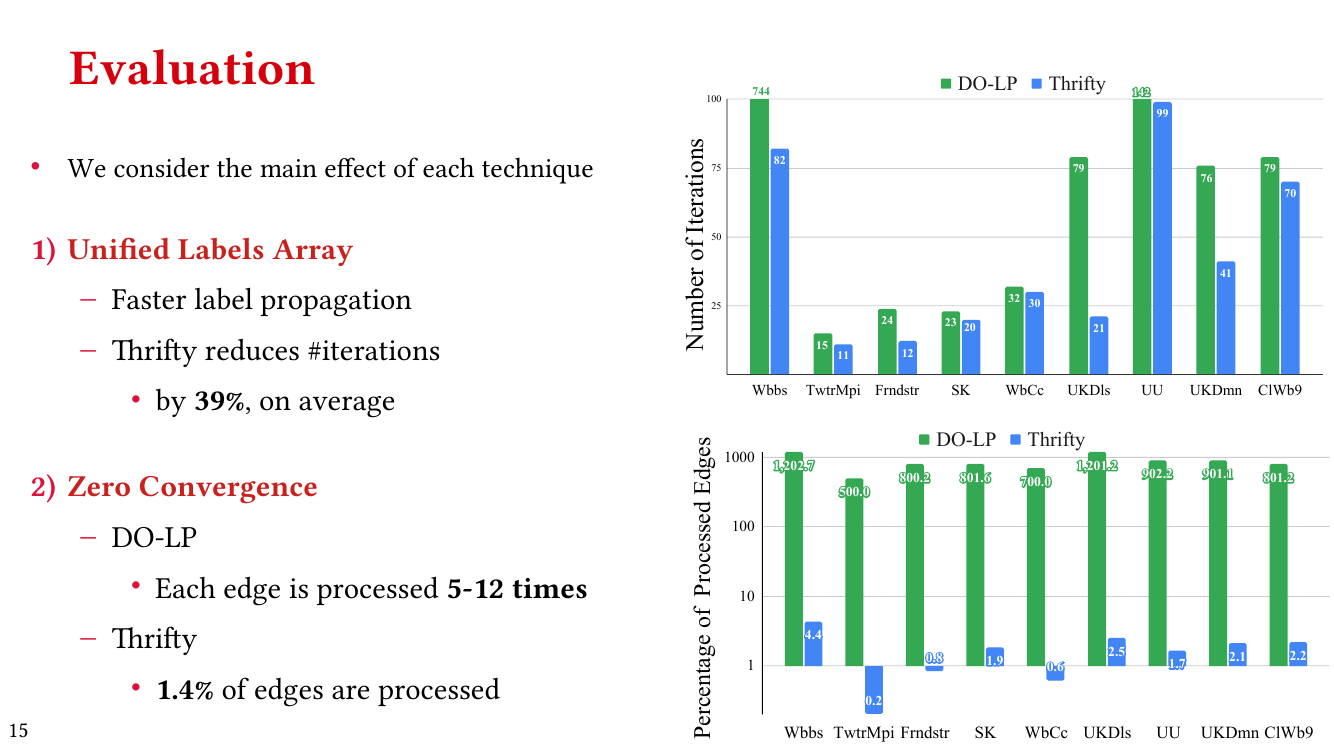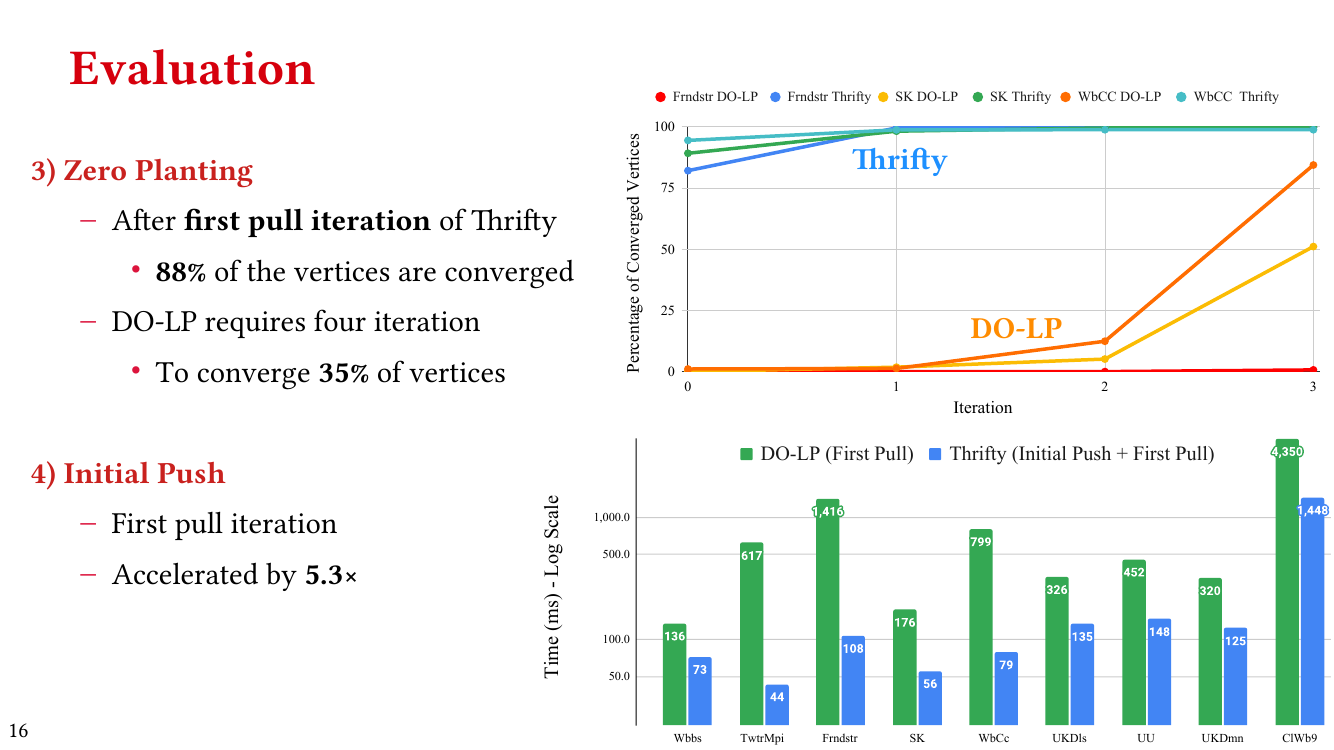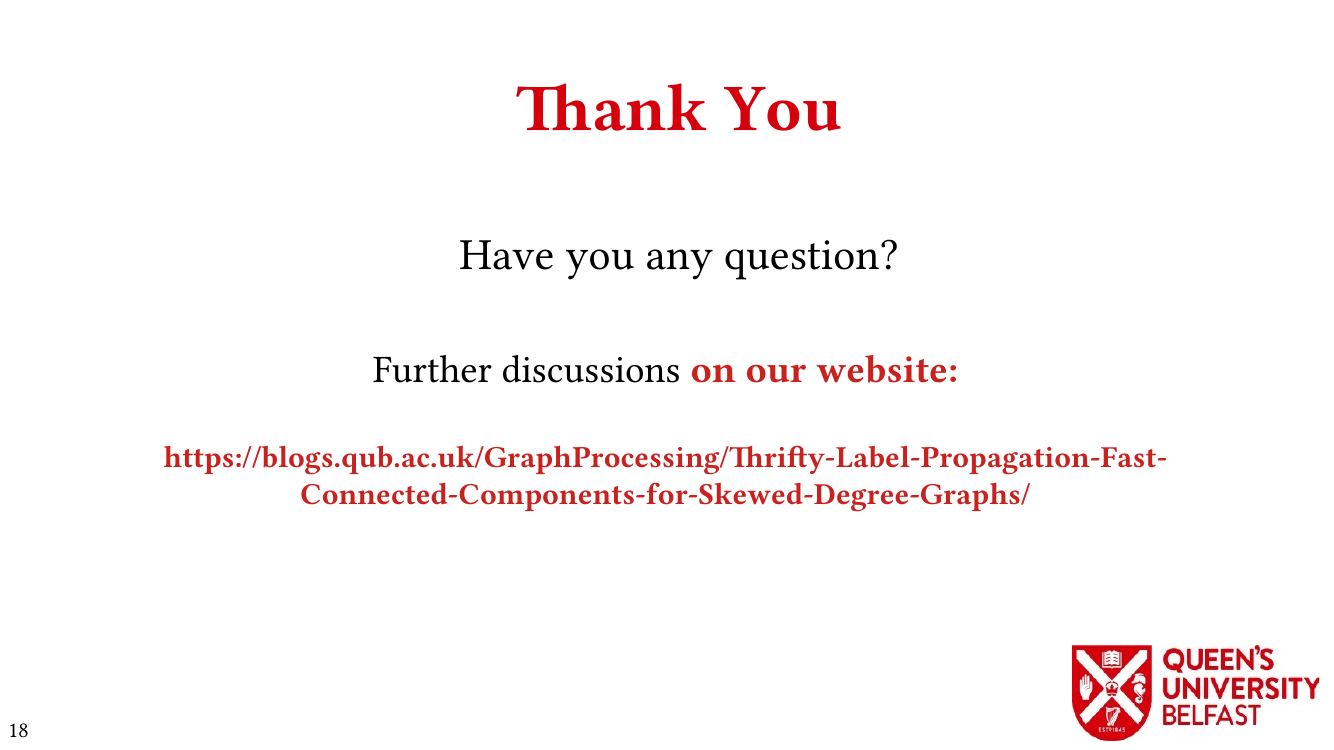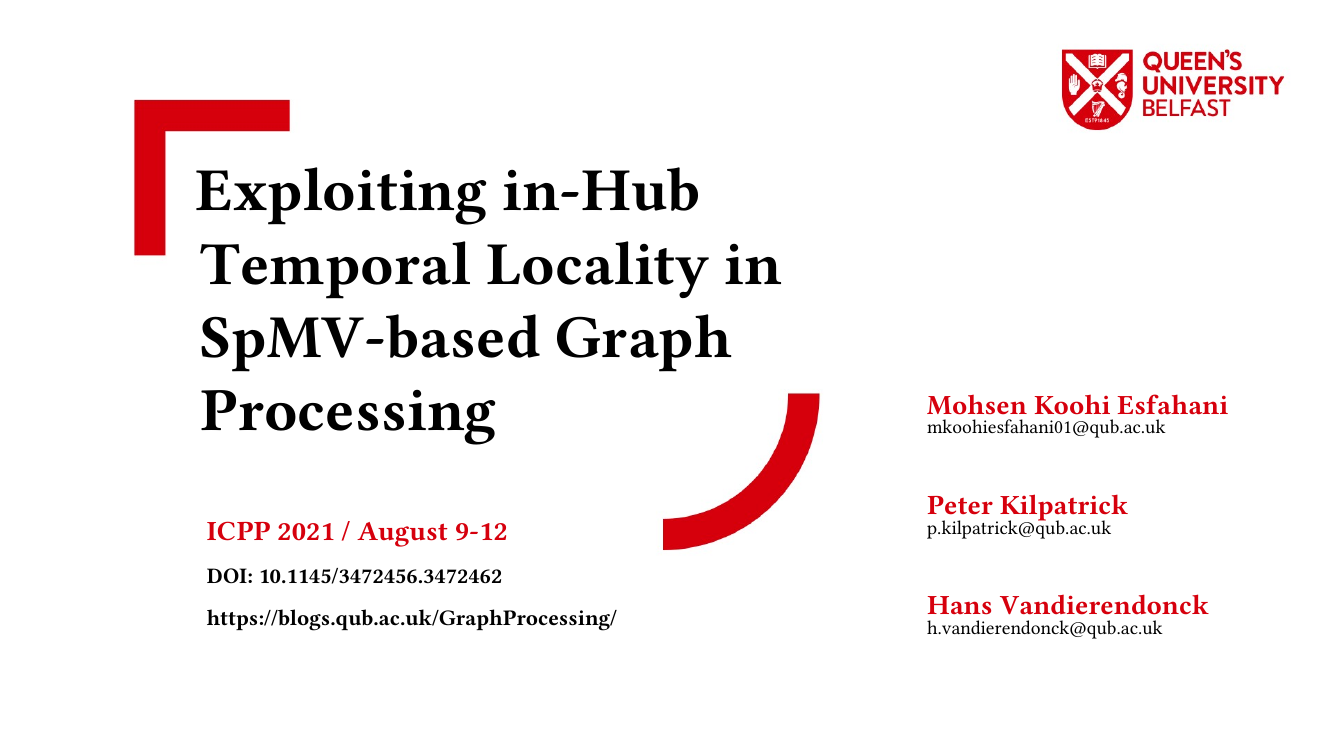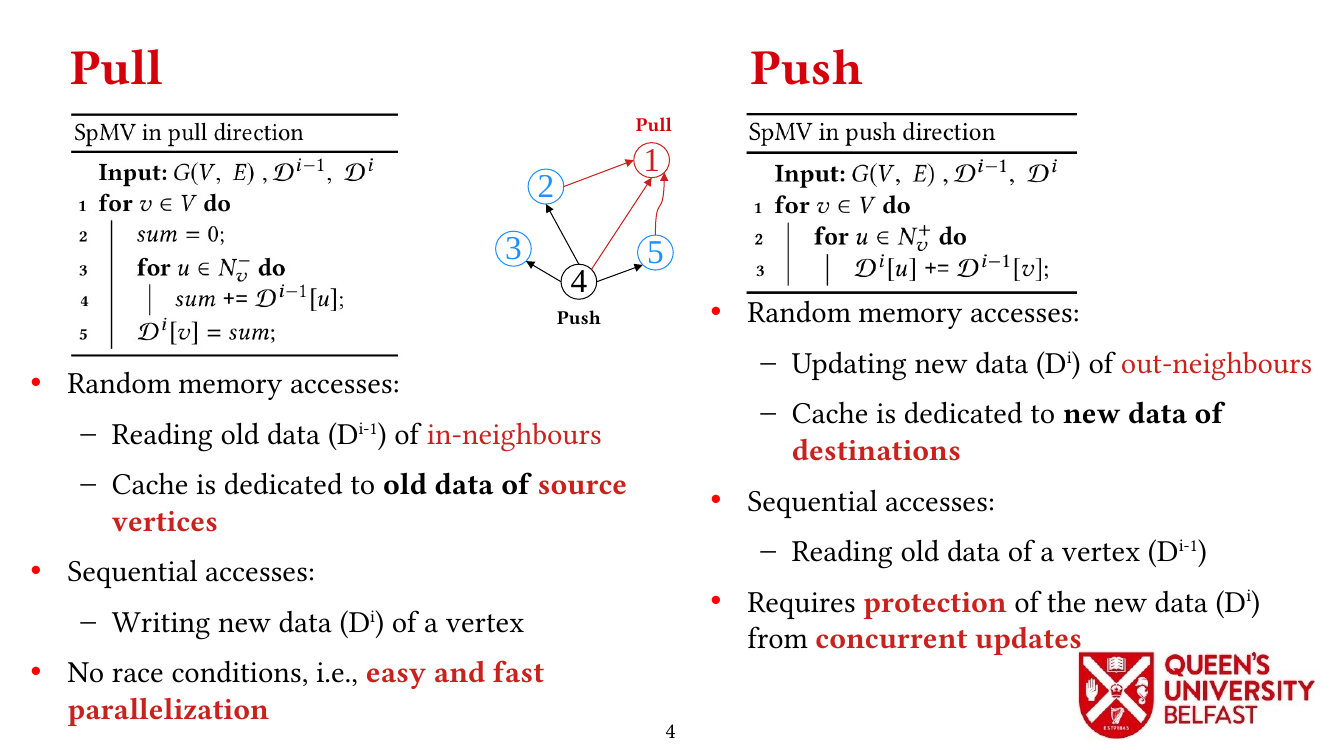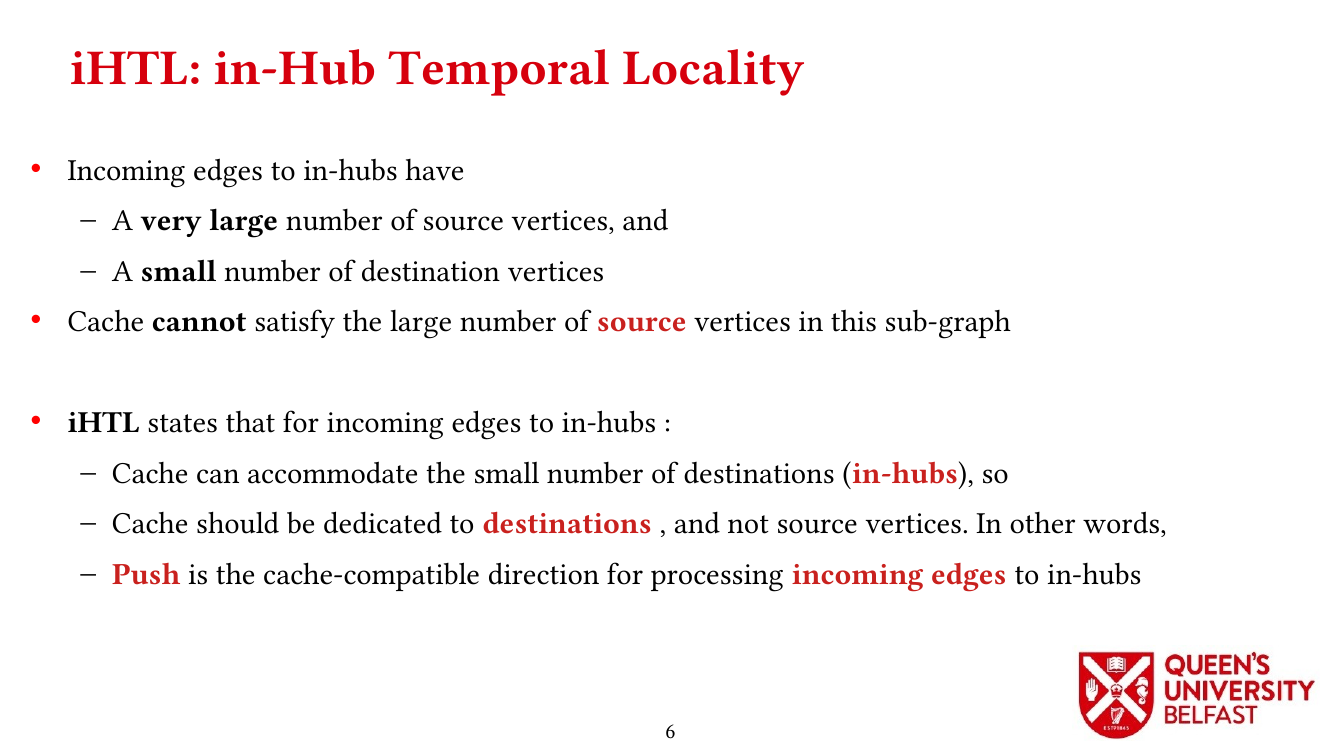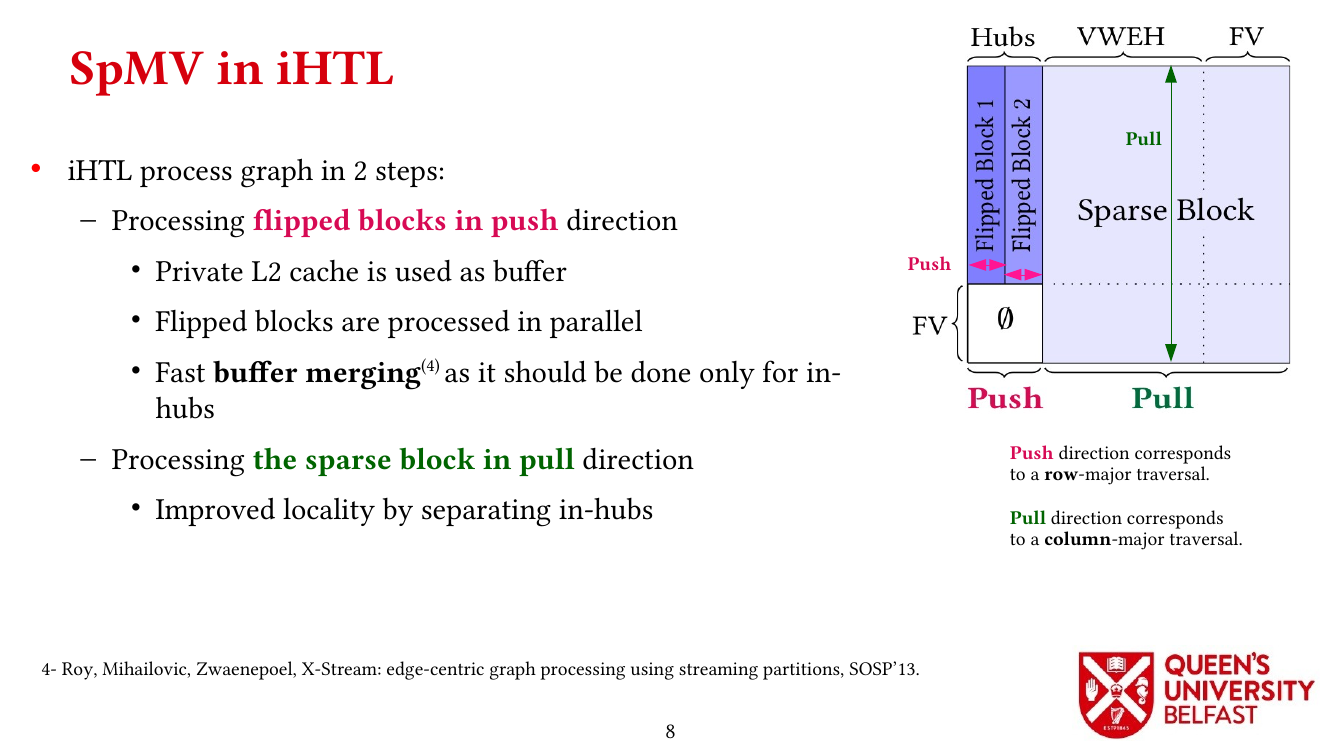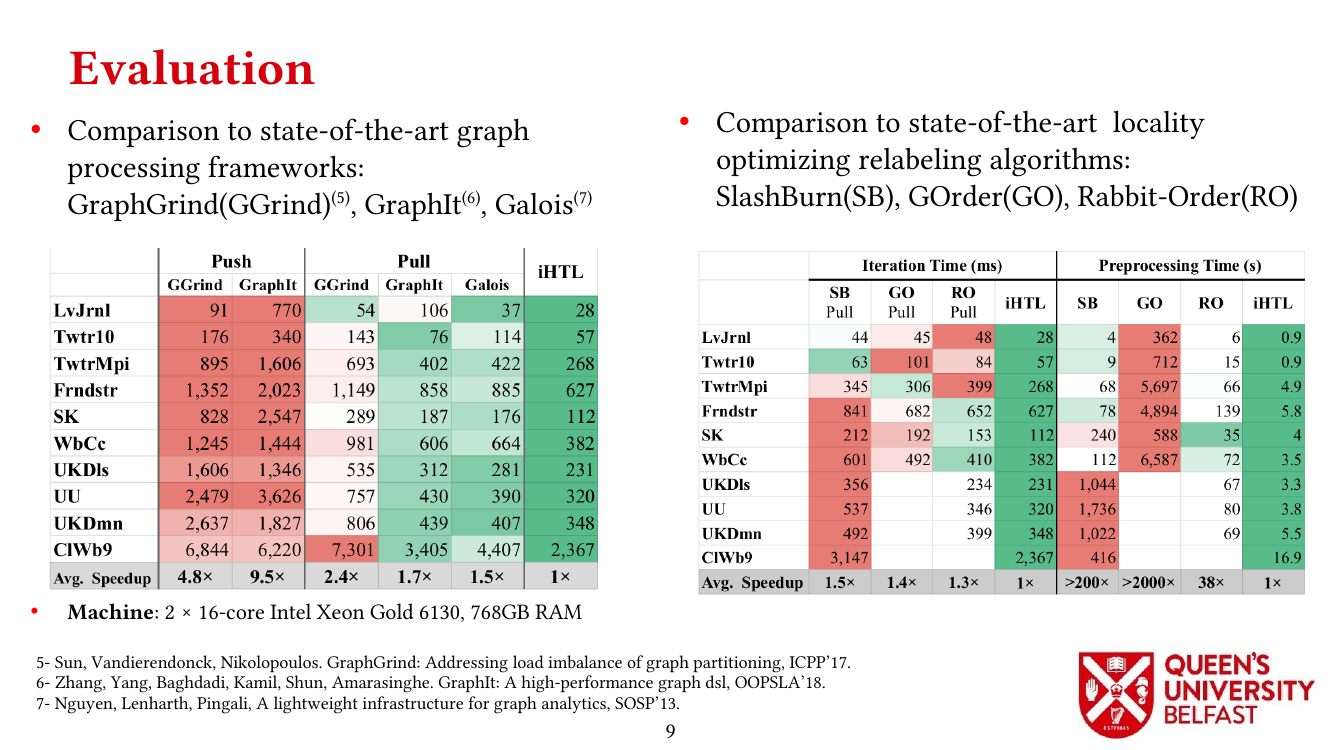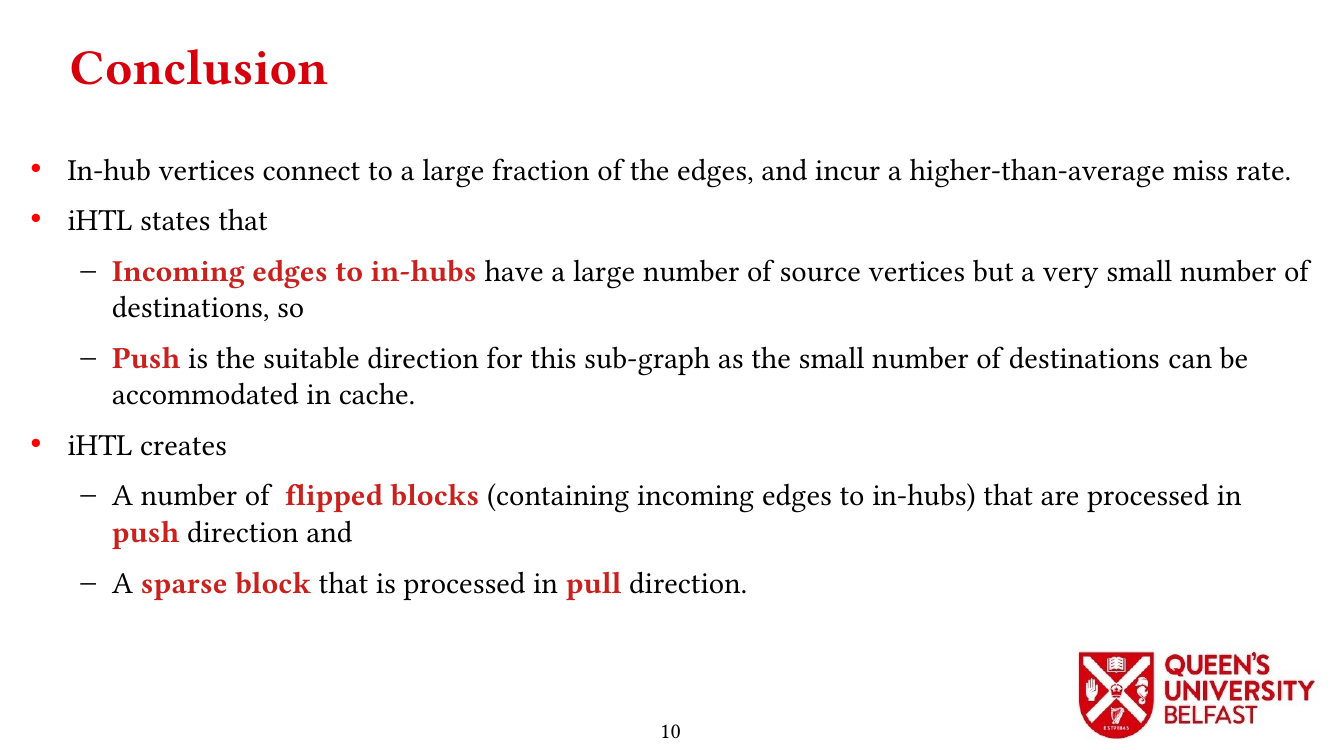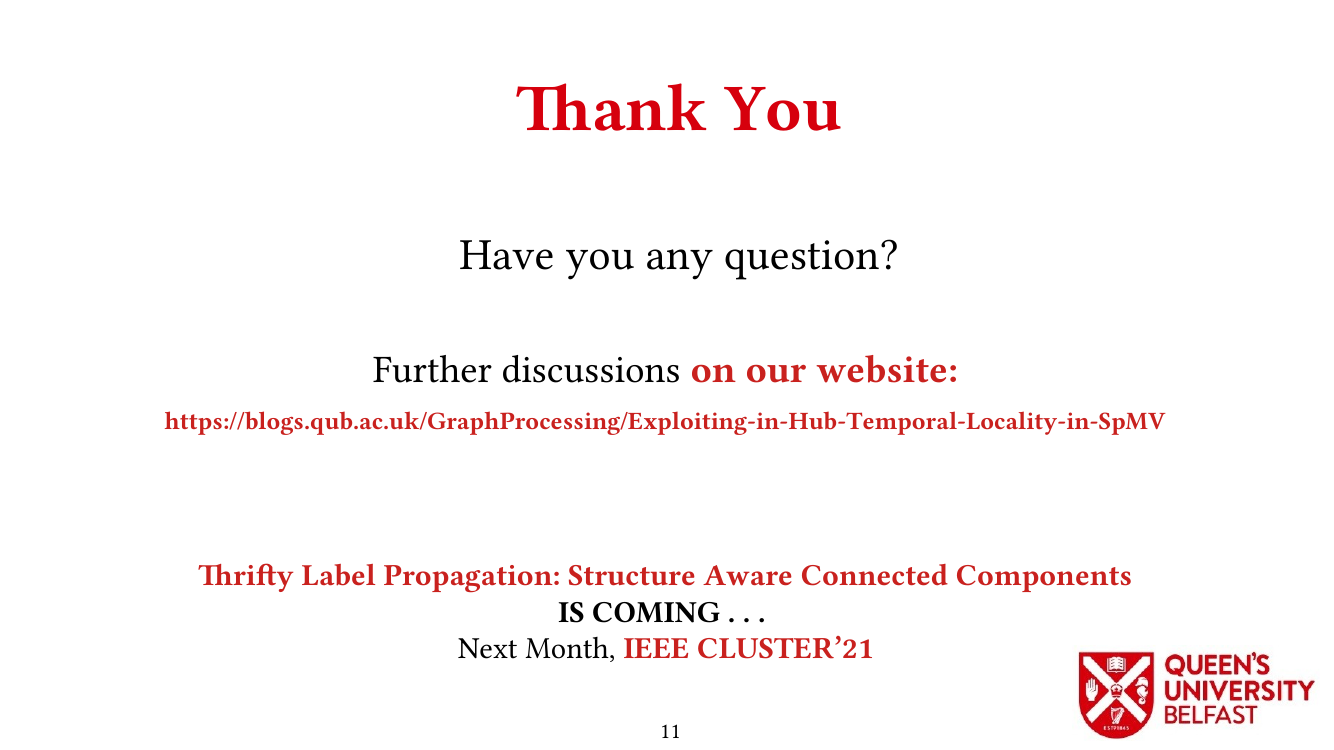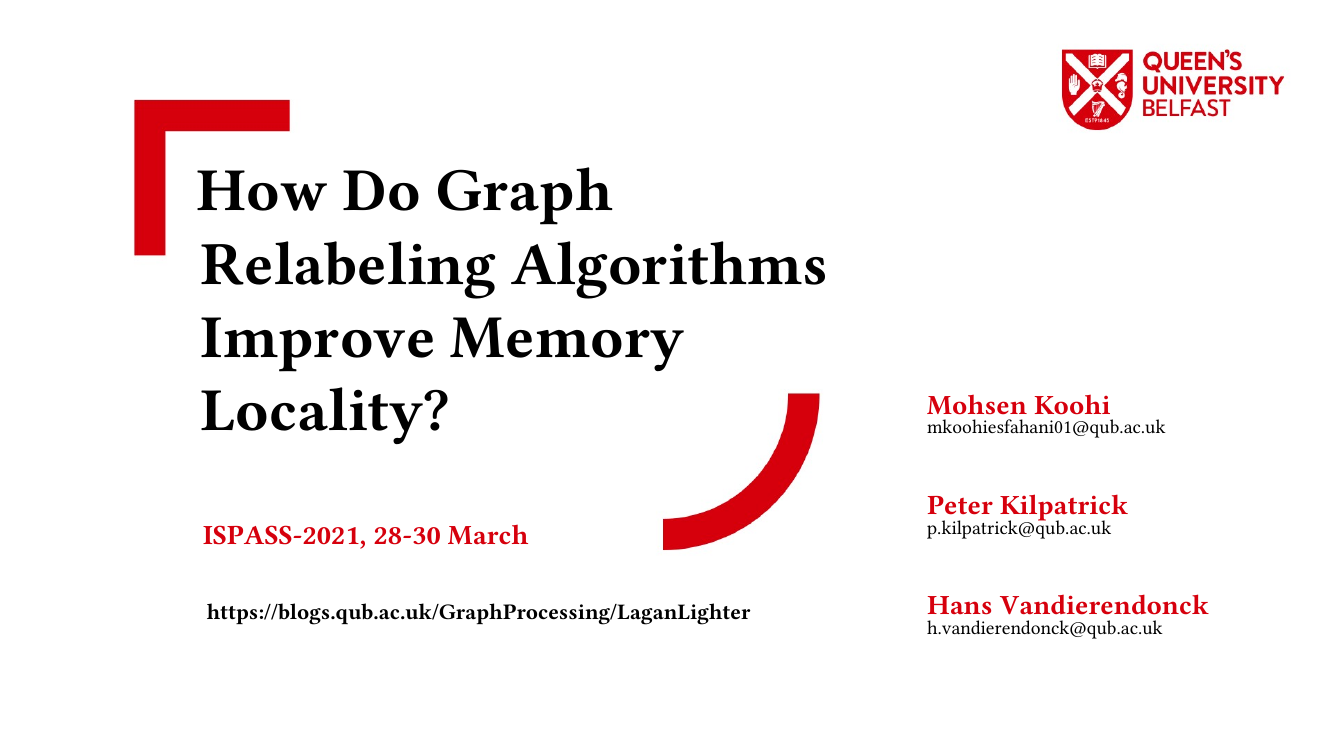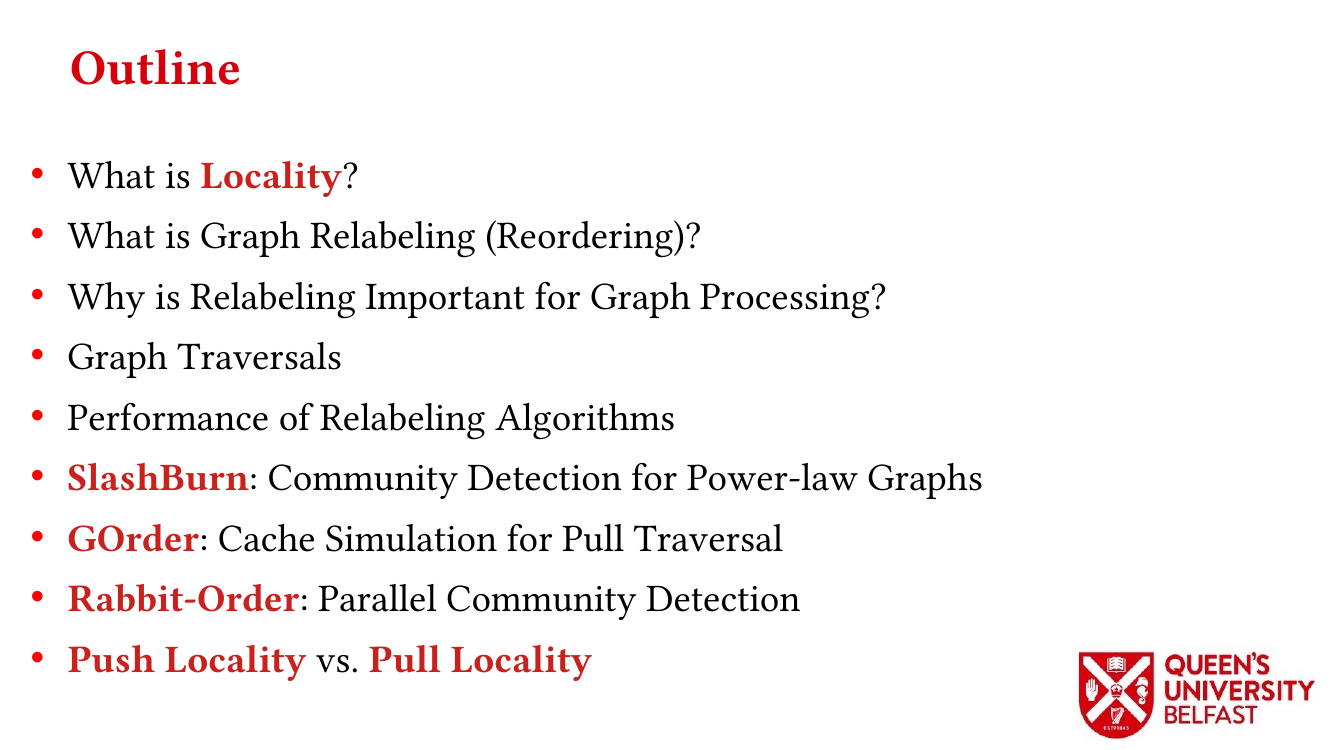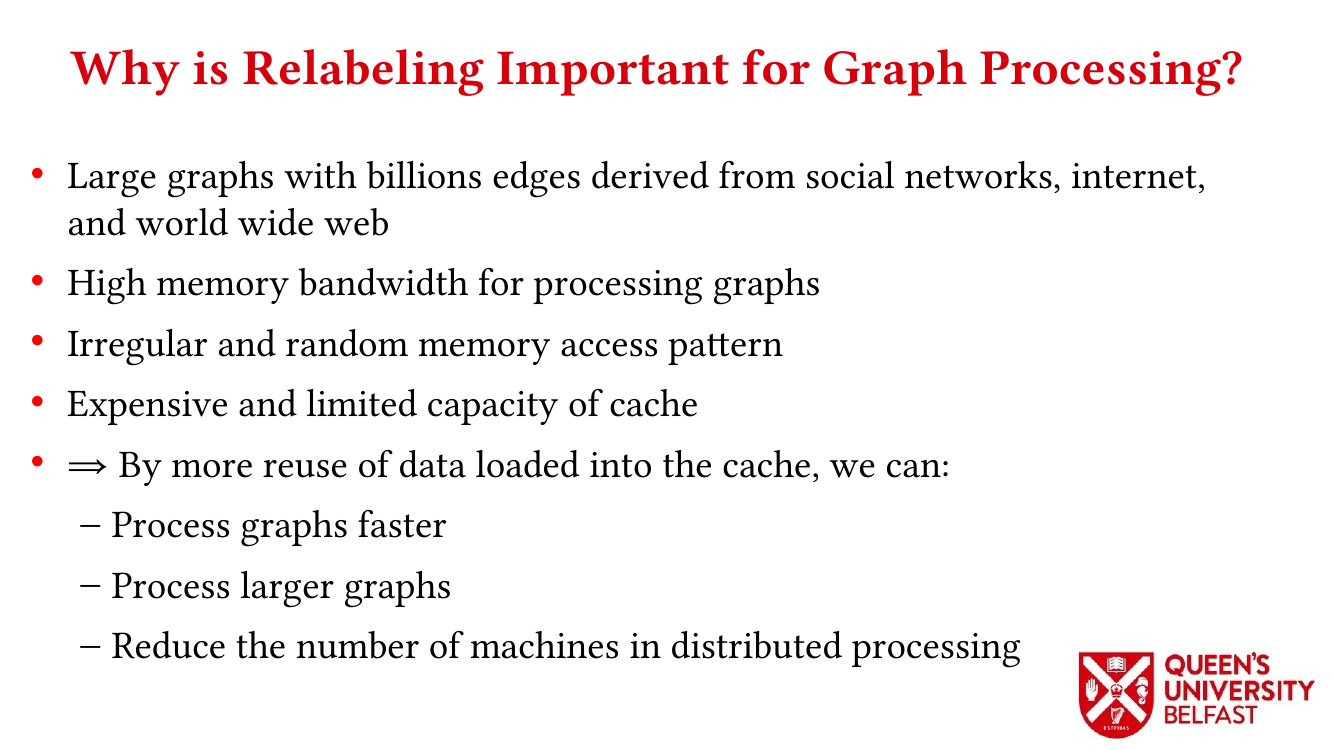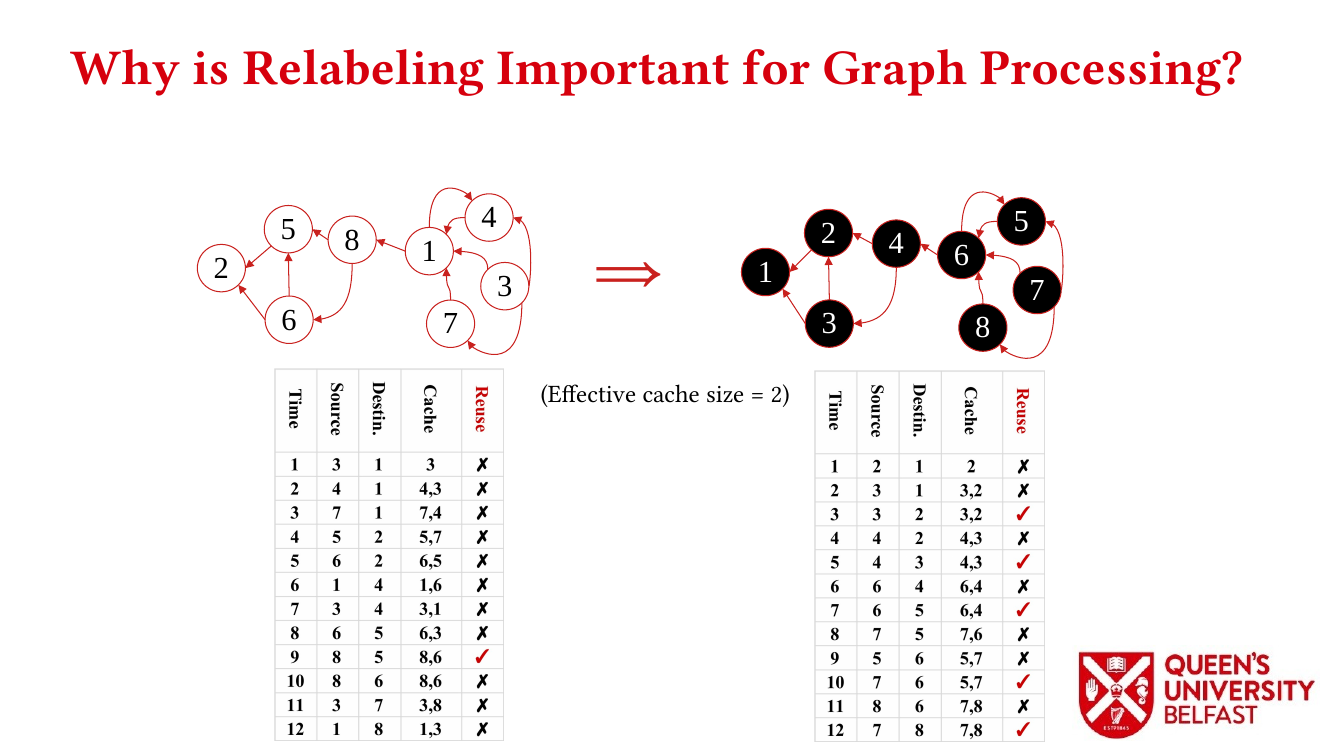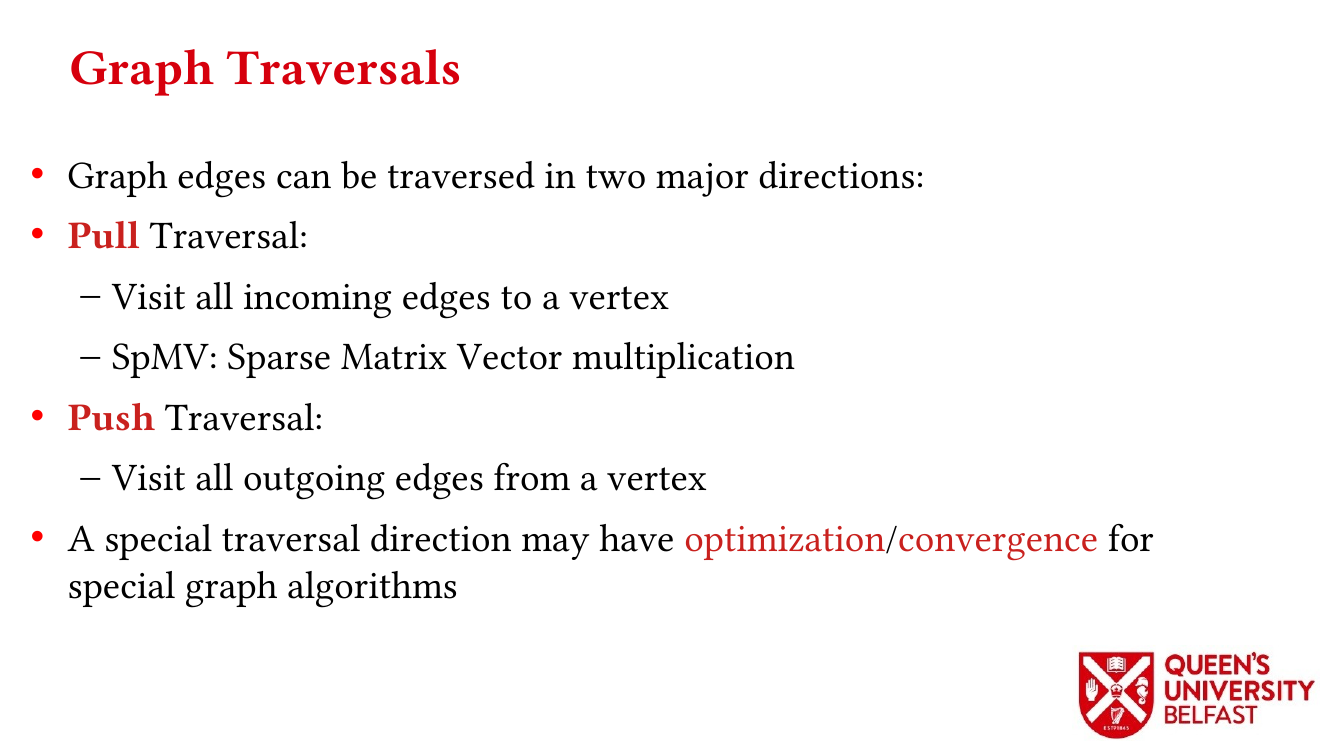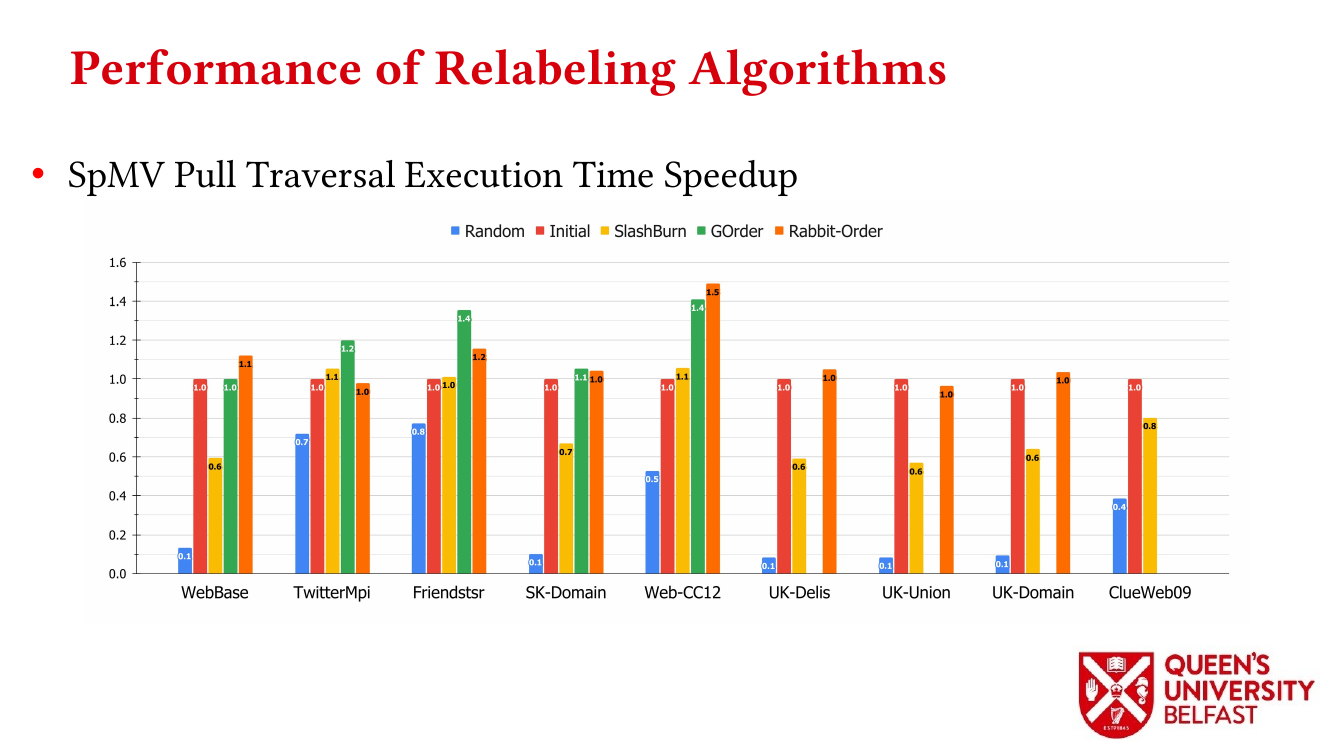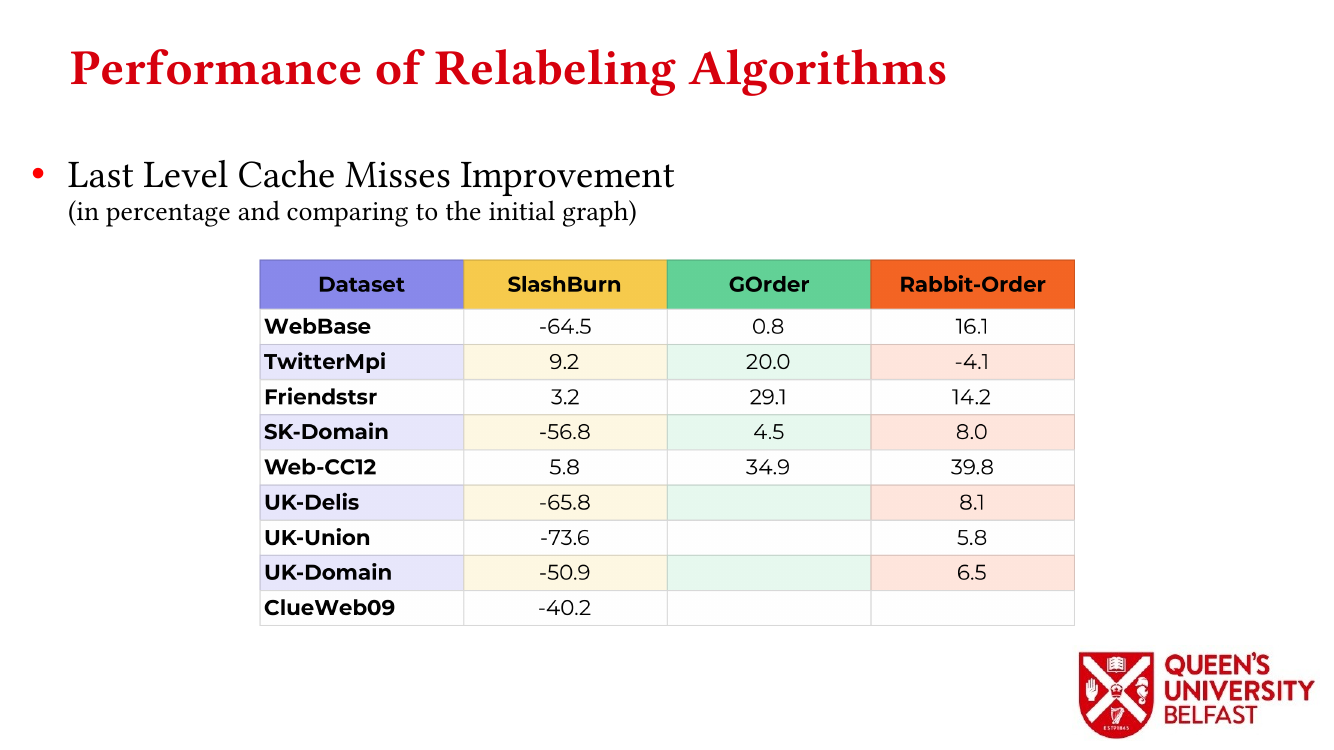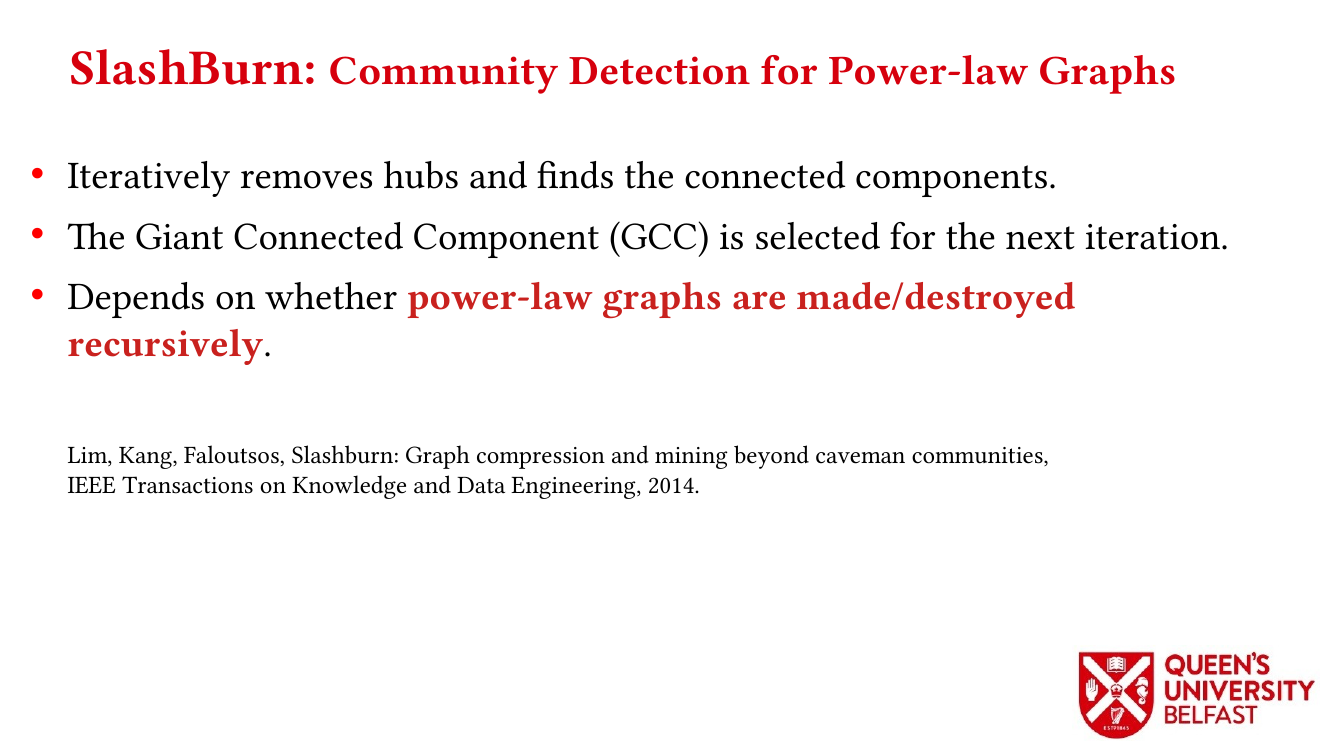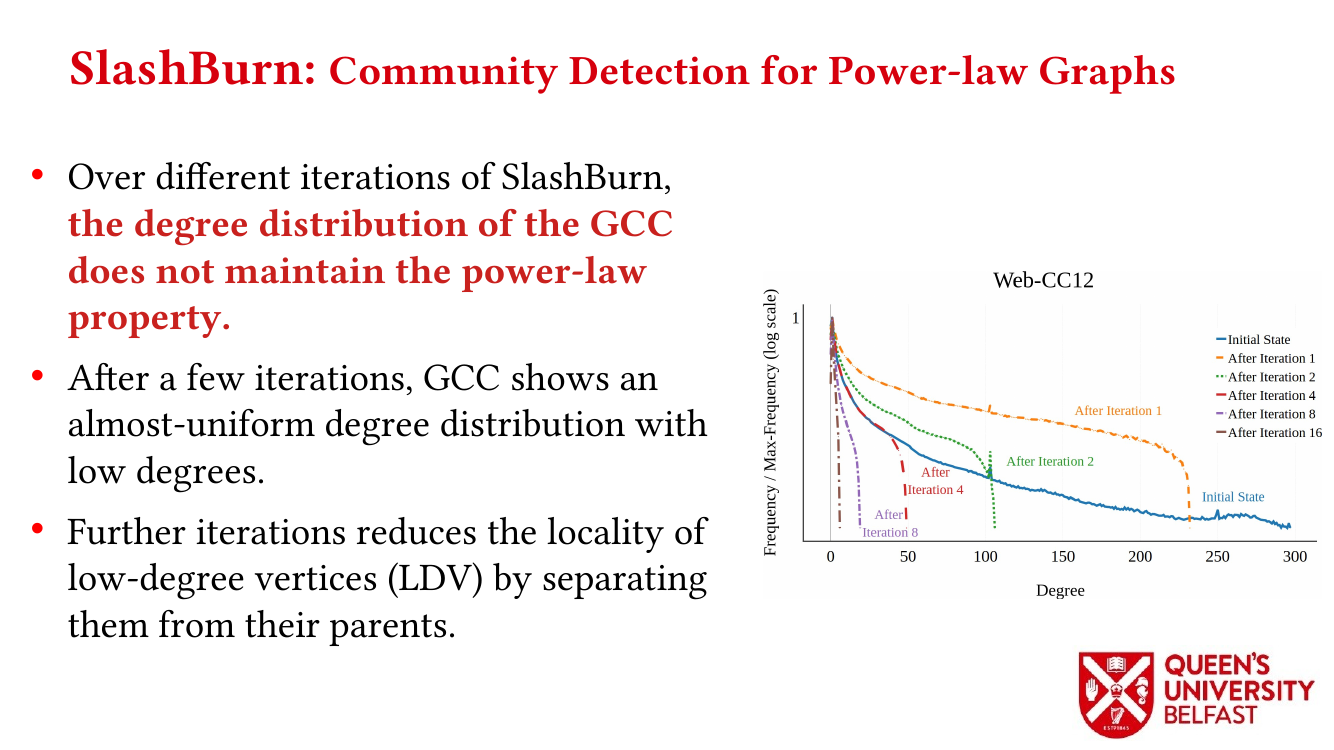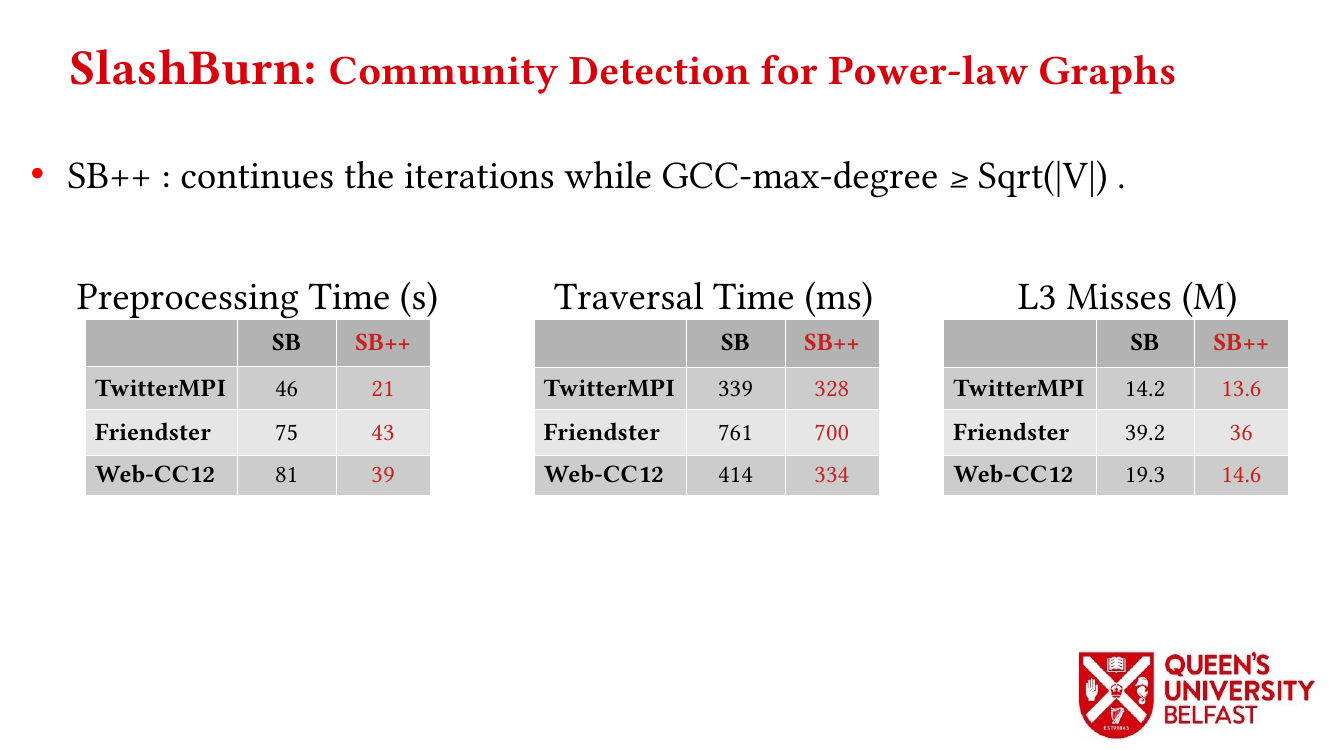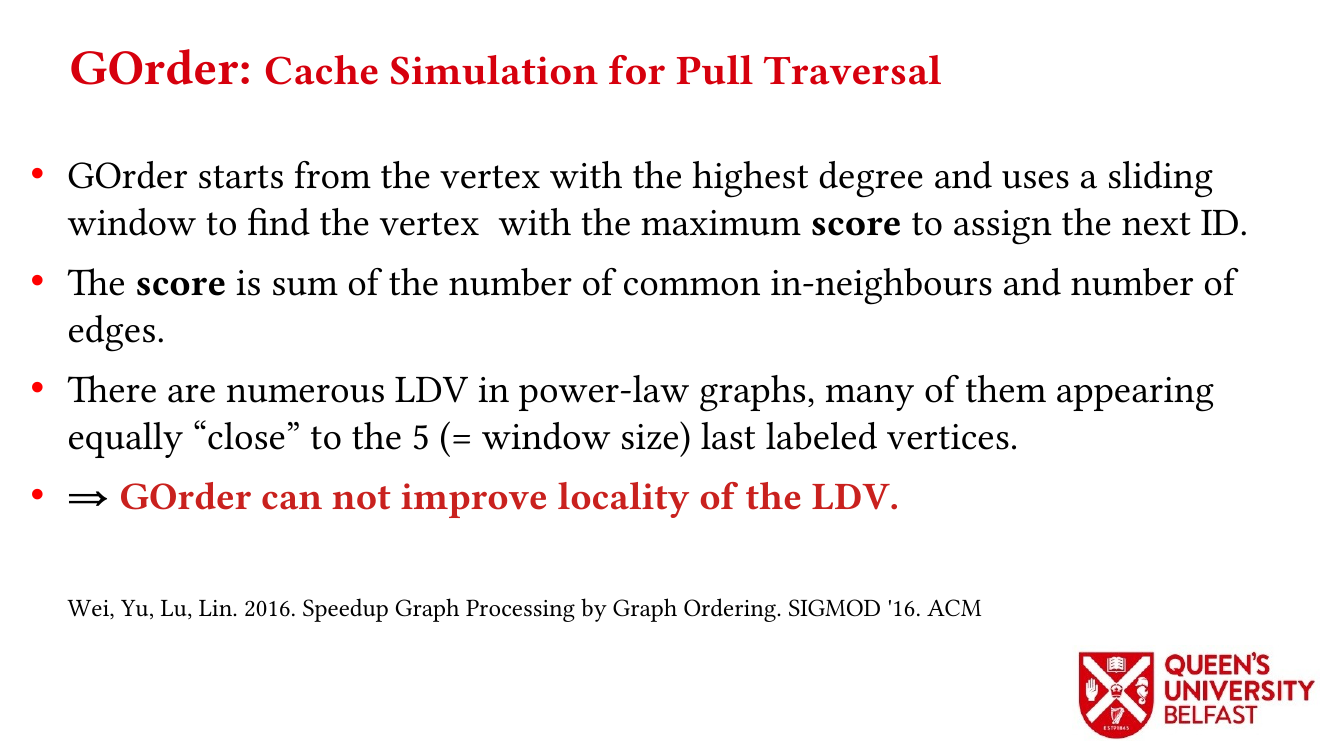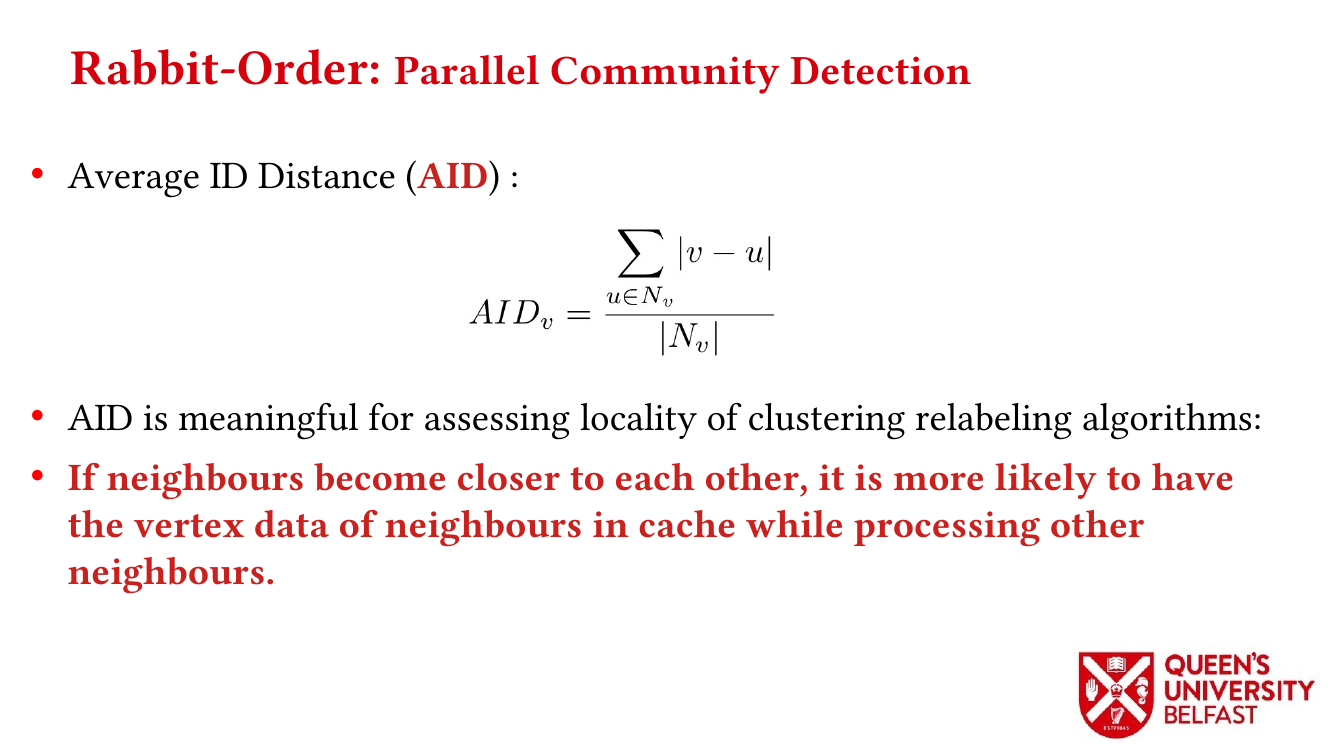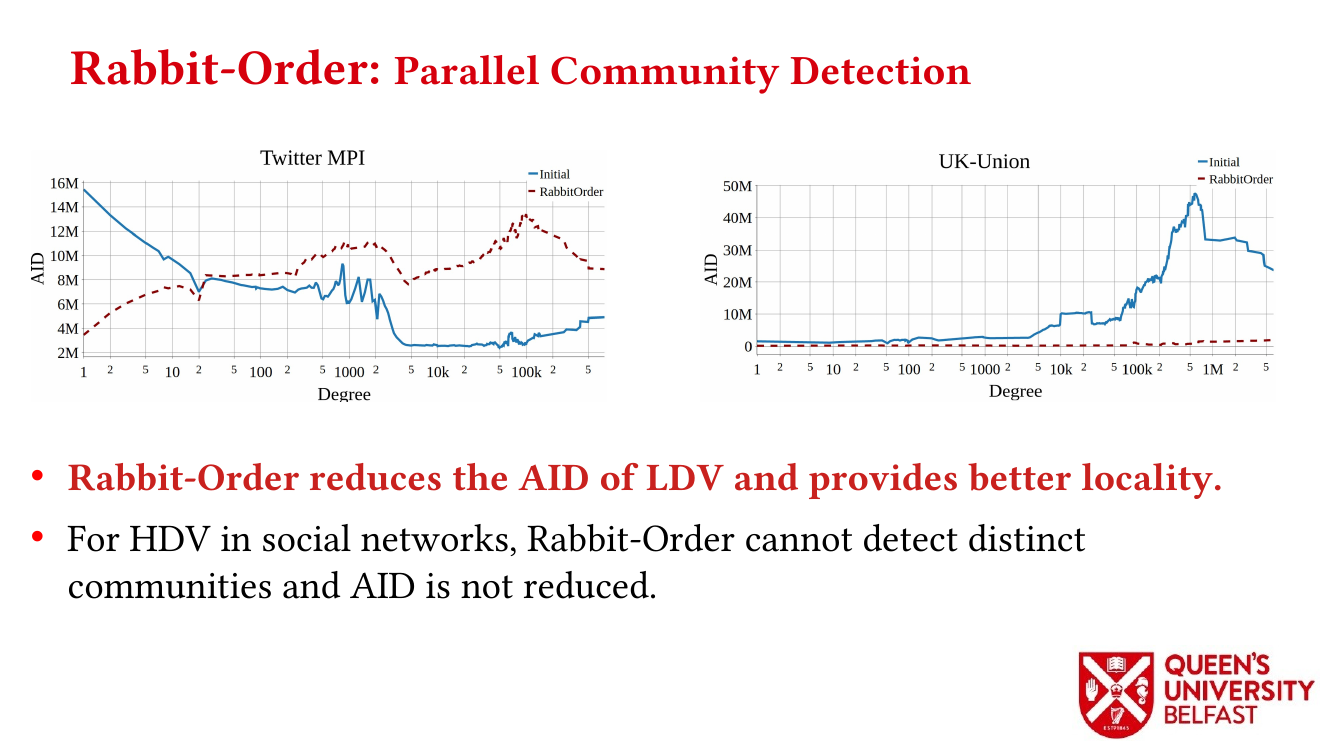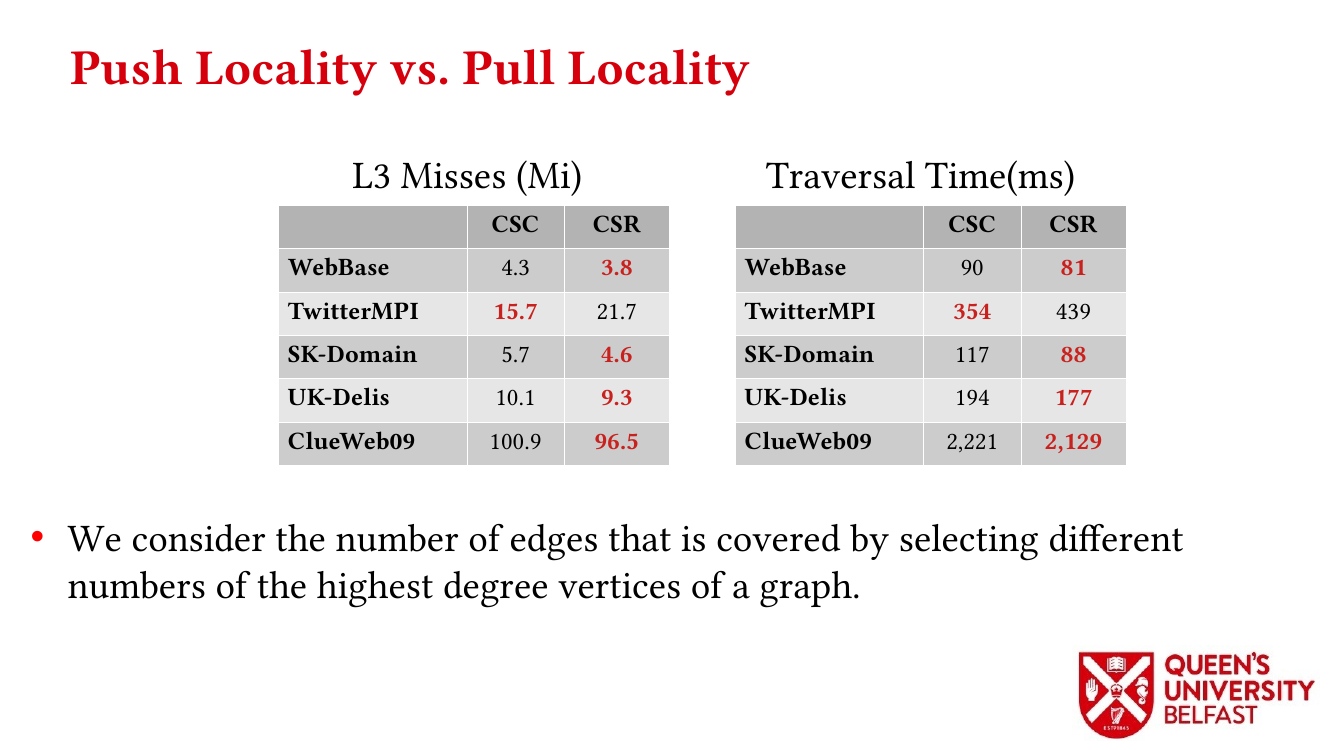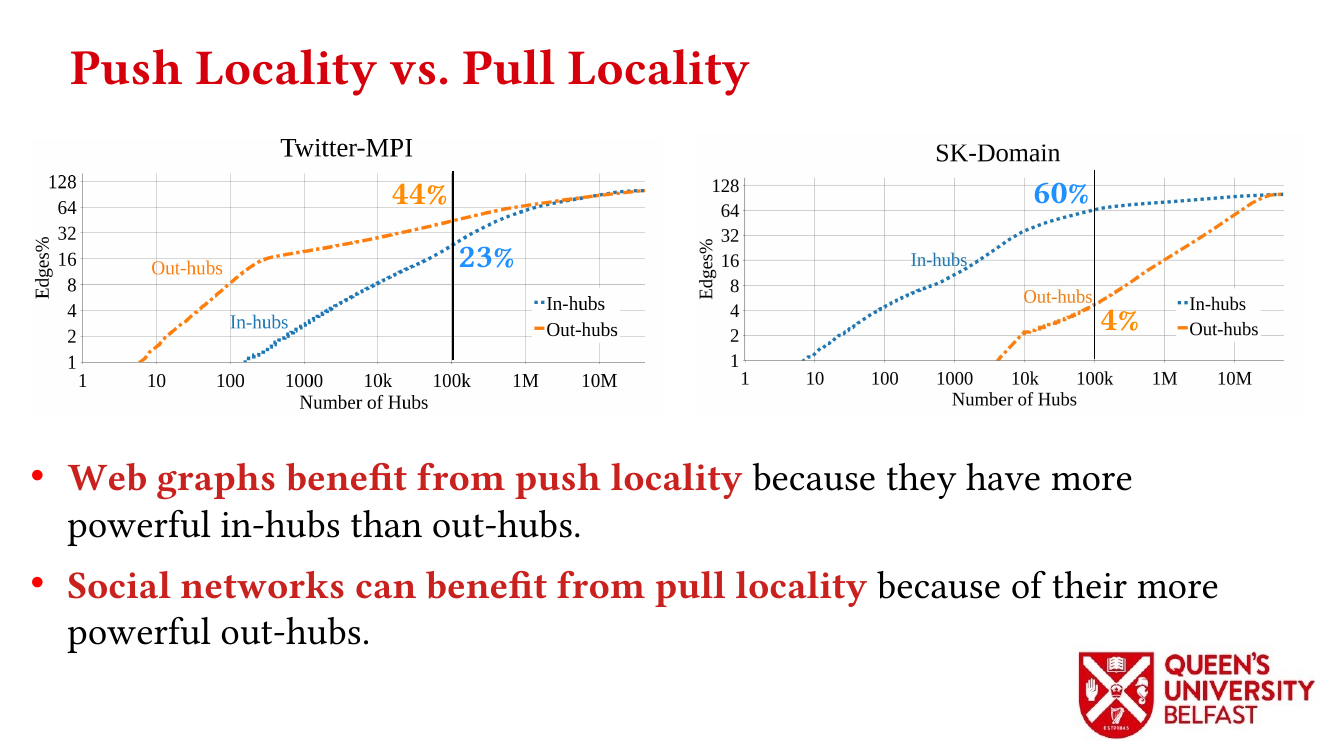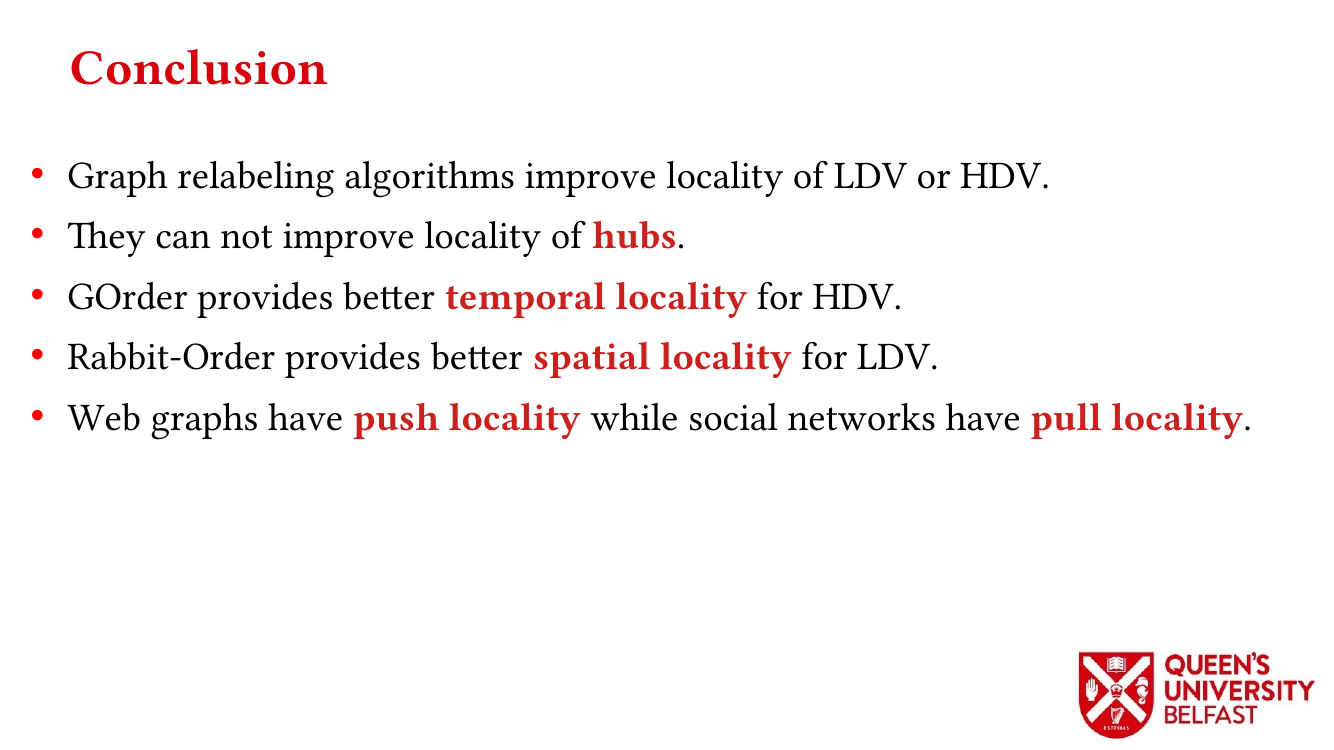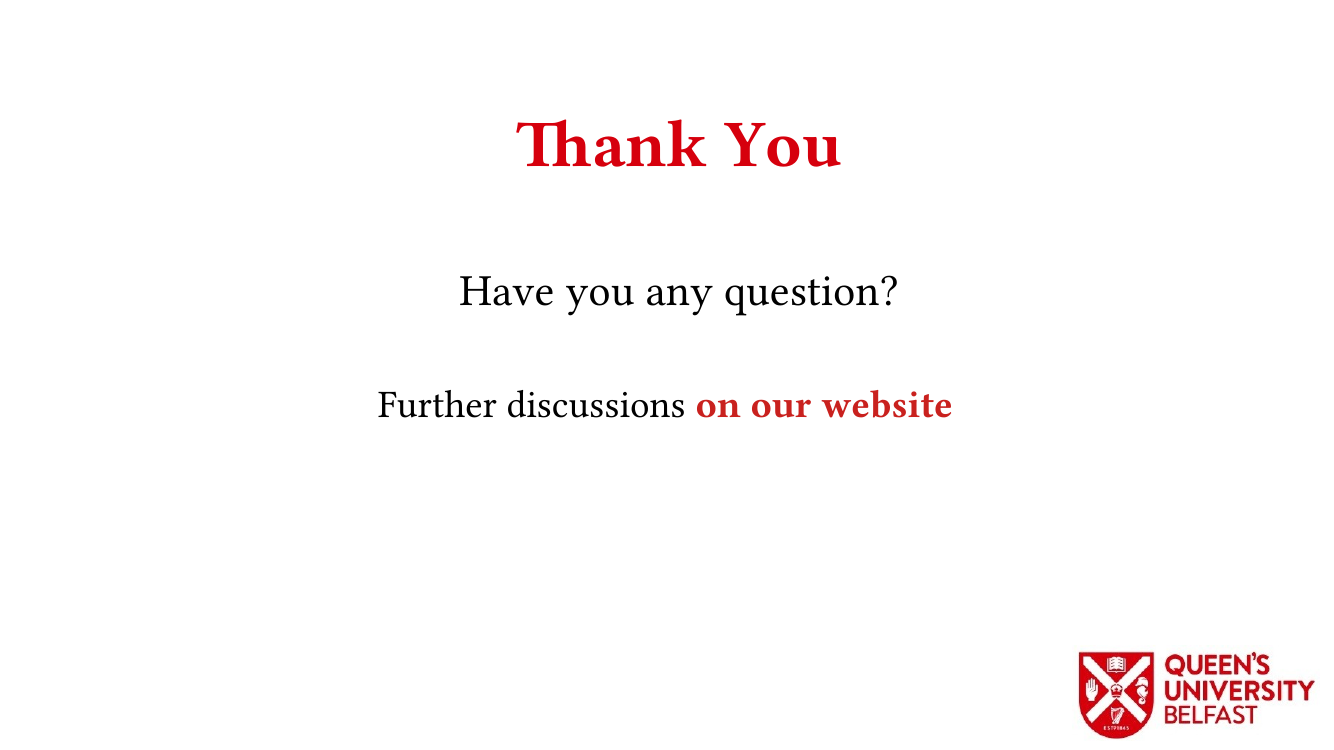IEEE CLUSTER 2021
7-10 September
Acceptance rate: 29.4%
DOI: 10.1109/Cluster48925.2021.00042
IEEE Xplore
PDF Version (Authors’ Copy)
Thrifty introduces four optimization techniques to Label Propagation Connected Components:
1) Unified Labels Array accelerates label propagation by allowing the latest label of each vertex to be read in processing other vertices.
2) Zero Convergence optimizes work-efficiency in the pull iterations of Label Propagation by skipping converged vertices.
3) Zero Planting selects the best start propagating point and increases the convergence rate and removes pull iterations that are required for the lowest label to reach the core of graph.
4) Initial Push technique makes the first iteration work efficient by skipping processing edges of vertices that probability of convergence is very small.
Based on these optimizations, Thrifty provides 1.4✕ speedup to Afforest, 6.6✕ to Jayanti-Tarjan, 14.3✕ to BFS-CC, and 25.0✕ to Direction Optimizing Label Propagation.
Code Availability
The source-code of Thrifty is available on LaganLighter Repository (alg2_thrifty.c and cc.c files). A sample execution of this source code for “Twitter-MPI” graph is shown in the following:

Bibtex
@INPROCEEDINGS{10.1109/Cluster48925.2021.00042,
author={Koohi Esfahani, Mohsen and Kilpatrick, Peter and Vandierendonck, Hans},
booktitle={2021 IEEE International Conference on Cluster Computing (CLUSTER)},
title={Thrifty Label Propagation: Fast Connected Components for Skewed-Degree Graphs},
year={2021},
volume={},
number={},
pages={226-237},
publisher={IEEE Computer Society},
doi={10.1109/Cluster48925.2021.00042}
}
Related Posts
- ParaGrapher Integrated to LaganLighter

- On Designing Structure-Aware High-Performance Graph Algorithms (PhD Thesis)

- LaganLighter Source Code

- MASTIFF: Structure-Aware Minimum Spanning Tree/Forest – ICS’22

- SAPCo Sort: Optimizing Degree-Ordering for Power-Law Graphs – ISPASS’22 (Poster)

- LOTUS: Locality Optimizing Triangle Counting – PPOPP’22

- Locality Analysis of Graph Reordering Algorithms – IISWC’21

- Thrifty Label Propagation: Fast Connected Components for Skewed-Degree Graphs – IEEE CLUSTER’21

- Exploiting in-Hub Temporal Locality in SpMV-based Graph Processing – ICPP’21

- How Do Graph Relabeling Algorithms Improve Memory Locality? ISPASS’21 (Poster)



